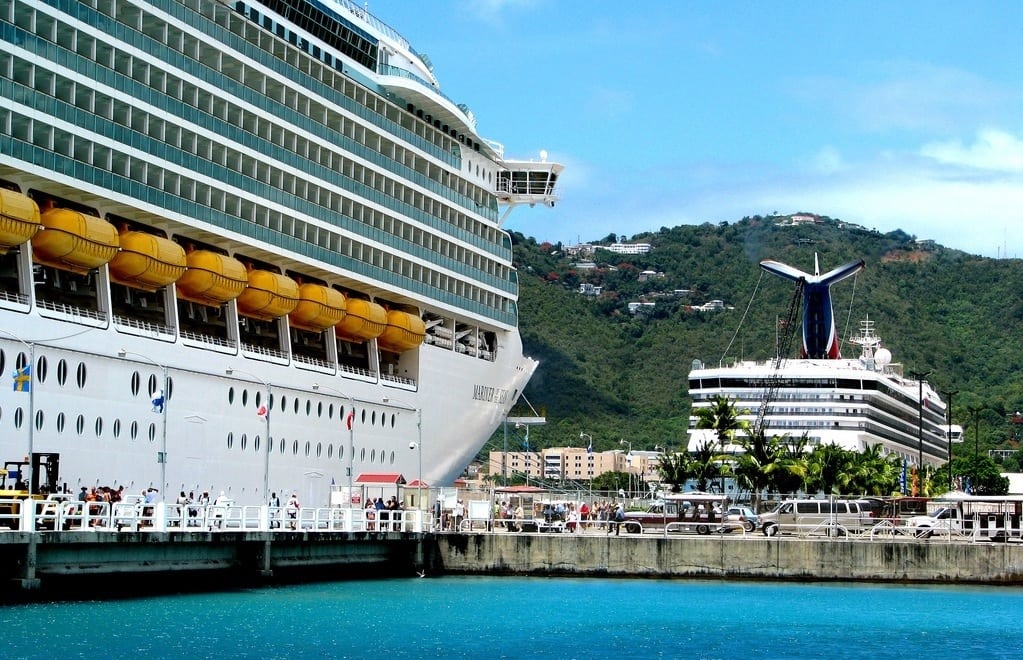Skift Take
As long as prices stay low the cruise industry will continue to thrive.
Cruising is the fastest growing segment inside the travel sector, industry specialists say. Consider: Some 17.6 million people are expected to cruise from North America in 2013, according to the Cruise Lines International Association. That’s a long way from the 7.2 million passengers that cruised from the region in 2000.
This year about 3.6 million passengers are expected to board one of the 41 cruise ships belonging to the cruise lines that operate from Port Everglades. Here’s a snapshot of cruising trends in 2013 and beyond:
Emerging destinations: While the Caribbean remained the top cruise destination for CLIA North America member lines in 2012, cruise operators are offering more itineraries in new cruising grounds such as Australia/New Zealand/Pacific, South America and Asia.
For example, the number of international cruise ships arriving in Shanghai’s specialty port for luxury liners is set to jump to more than 150 in 2013, up from 62 in 2012, according to CLIA.
Royal Caribbean International now has two ships based in Asia —Mariner of the Seas and Voyager of the Seas — seizing on passenger growth opportunities presented by markets like China, with its enormous population and emerging wealth.
There, “people have the same desire to see the world and now have the opportunity to do that,” Royal Caribbean President and CEO Adam Goldstein said recently.
Still Goldstein said one of the challenges of the China market is consumers’ lack of awareness of the cruising experience and what it offers.
Meanwhile, competitor Carnival Cruise Lines is continuing its year-round voyage of Carnival Spirit in Australia, which began last October.
‘It’s a good market for us,” Carnival President and CEO Gerry Cahill said during an address at the Miami conference. There are opportunities for growth in Australia, which has emerged as a “huge family market,” noted Cahill.
The numbers in 2012: Caribbean (34.4 percent) Mediterranean (21.7 percent) and Europe (11 percent), Australia/New Zealand/Pacific (5 percent), South America (3.9 percent) and Asia (3.4 percent).
New ships: Ten new ocean-going cruise ships will launch between 2013 and 2014 along with 15 river cruise ships. Those 25 new ships represent a more than $7 billion investment, CLIA’s Duffy said.
Among them is Royal Caribbean International’s next generation ship, Quantum of the Seas, which will debut in fall 2014. The cruise line, which is touting its features as “a dramatic leap forward in ship design and guest experiences,” will offer a preview of the ship on April 16 at a New York event.
Another is Princess Cruises’ Royal Princess ship launching this June in Europe. The 3,600-passenger ship is expected to sail from Port Everglades on its Caribbean maiden voyage Oct. 29.
Refurbishing: Cruise lines are also sprucing up older ships to enhance the customer experience and provide a more consistent level of offerings to match the newer ships in their fleet.
Some examples:
In May, Carnival Sunshine (formerly Carnival Destiny) will re-launch after undergoing a $155 million transformation. Sunshine will feature 182 new cabins and spa staterooms, Carnival’s first three-deck-high adults-only retreat area, a new racing-themed water park with Carnival’s longest water slide, and several new bars and restaurants, including the tropical-themed Havana Bar and a full-service Asian restaurant.
In April Independence of the Seas will get a $7.5 million makeover and when it re-emerges in May will have several new amenities including a baby and toddler nursery and a giant outdoor cinema screen. The 3,634-passenger ship is currently sailing six-night Western Caribbean cruises from Port Everglades.
Royal Caribbean is also renovating ships as part of an on-going $300 million-plus revitalization program.
Safety: Carnival Triumph‘s stranding in February and ensuing problems on other Carnival ships has led at least one lawmaker to call for a cruise passenger bill of rights.
The bill’s protections would include the right to get off a docked ship if basic provisions cannot be provided adequately onboard and the right to backup power in the case of a generator failure, among others.
“This bill of rights, based on work we’ve done with the airline industry, will ensure that passengers aren’t forced to live in third-world conditions or put their lives at risk when they go on vacation,” said Sen. Charles Schumer, D-N.Y., in a statement proposing the bill.
In a statement, CLIA officials pledged to review Schumer’s proposal.
“While the industry must adhere to strict international and national regulations, wherever and whenever our ships operate, we also continuously strive through industry-initiated policies and ongoing reviews to improve upon our practices to help ensure the best vacation experience for all or our guests,” CLIA added.
(c)2013 the Sun Sentinel (Fort Lauderdale, Fla.). Distributed by MCT Information Services.
![]()
The Daily Newsletter
Our daily coverage of the global travel industry. Written by editors and analysts from across Skift’s brands.
Have a confidential tip for Skift? Get in touch
Photo credit: Mariner of the Seas and Carnival Triumph in port at St. Thomas. Rennet Stowe / Flickr
